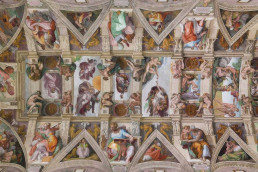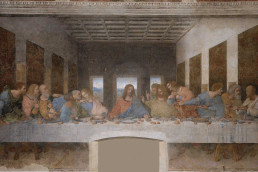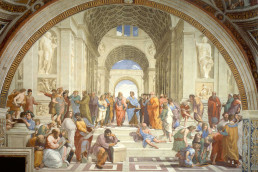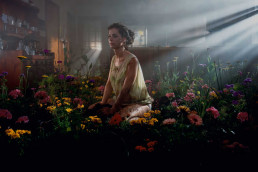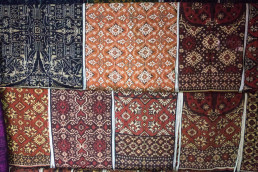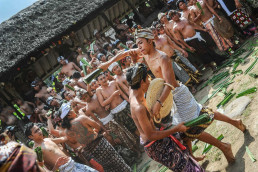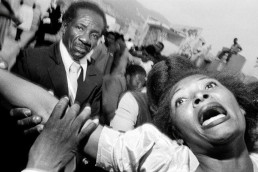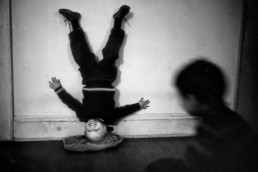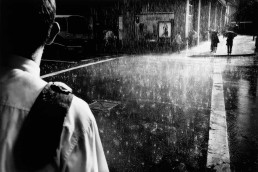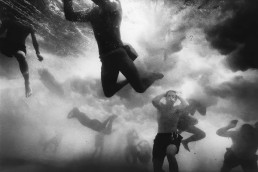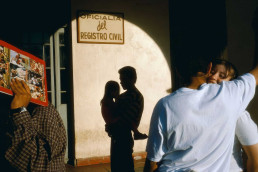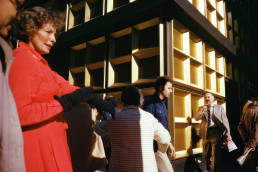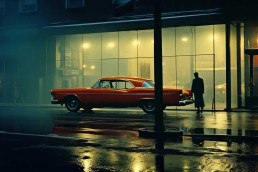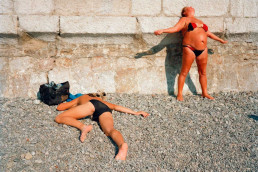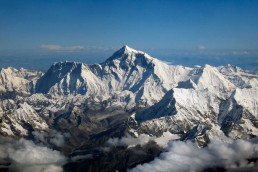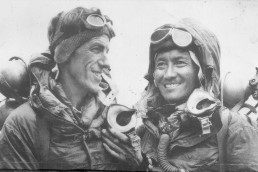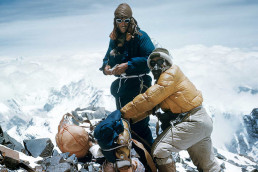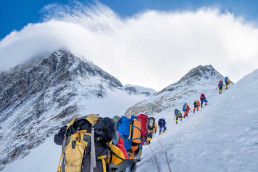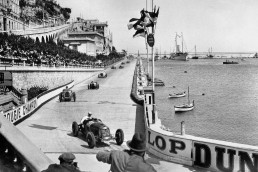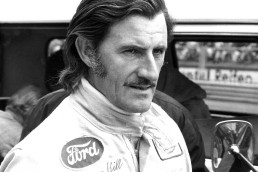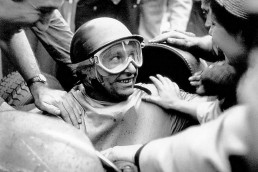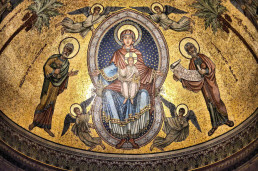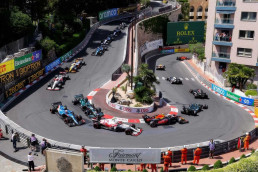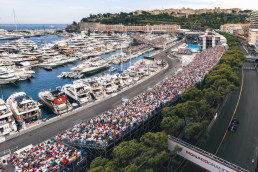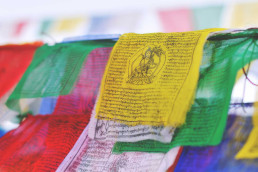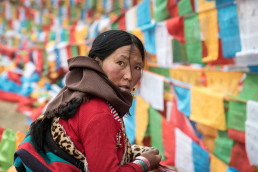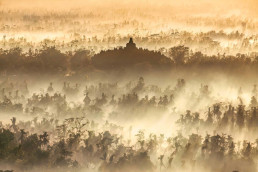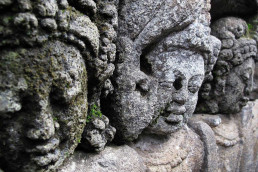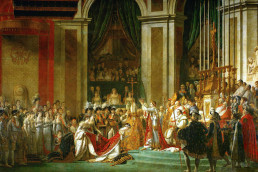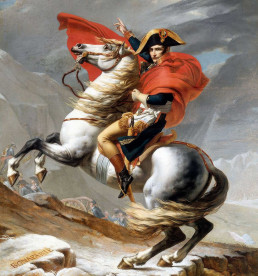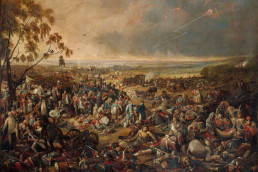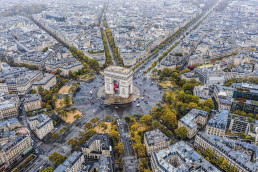Reviving Renaissance Art in the Digital Age
The Renaissance, which lasted roughly from the 14th to the 17th century, is a watershed moment in European history. After the relative stagnation of the Middle Ages, there emerged a significant cultural, artistic, and intellectual rebirth. The Renaissance, marked by a revitalised interest in ancient Greece and Rome’s classical art, literature, and philosophy, fueled advances in a variety of sectors, including science, politics, and, most notably, the arts.
The title “Renaissance,” which means “rebirth,” accurately describes the core of this transformational era. During this time, the Western world witnessed the rise of a new cultural paradigm, with humanism—a philosophy emphasising the importance and agency of humans—becoming the foundation of intellectual life. This transition had a tremendous impact on the visual arts, resulting in the creation of some of the most enduring and influential masterpieces in history.
The Renaissance was characterised by a shift in the way people approached art. Painters started using techniques that emphasised realism, human emotion, and the beauty of the natural world. Linear perspective, chiaroscuro (light-shadow contrast), and anatomical correctness enabled artists to produce more lifelike and three-dimensional creations. Figures such as Leonardo da Vinci, Michelangelo, and Raphael became identified with this artistic revolution, creating masterpieces that are still recognised today.
Leonardo’s “The Last Supper” and Michelangelo’s “Sistine Chapel Ceiling” are great examples of Renaissance painters’ ability to create dynamic compositions rich in expressive figures and skillful use of light and space. Leonardo’s mastery of sfumato (a method for easing colour transitions) gave his paintings an unparalleled lifelike appearance. Michelangelo’s mastery of human anatomy allowed him to sculpt and paint the human form with incredible realism and power, as seen by his work on the Sistine Chapel ceiling and the statue of David.
Raphael, another luminary of this era, was known for his clarity of form and ease of composition. His paintings, such as “The School of Athens,” exemplify the harmonious combination of creative skills and humanistic topics that characterise Renaissance art. These components not only distinguished Renaissance painting, but also paved the way for subsequent artistic endeavours, such as photography.
Although photography was developed centuries after the Renaissance, it owes a lot to the artistic triumphs of that time period. The Renaissance’s perfected ideas of composition, light manipulation, and perspective have become the cornerstone of photographic technology. Modern photographers frequently use these classical features to create photographs that evoke the depth and drama of Renaissance paintings.
The use of perspective, which provides the sense of depth on a flat surface, was one of the Renaissance’s most important contributions to painting and, by extension, photography. Linear perspective, first developed by Filippo Brunelleschi and later mastered by artists such as Leonardo da Vinci, enables photographers to manipulate space and depth in their photos, leading the viewer’s attention across the composition in a controlled and planned manner.
Similarly, the chiaroscuro method, which uses sharp contrasts between light and dark to create the sense of volume in three-dimensional objects and figures, is another Renaissance innovation that has had a significant impact on modern photography. This approach allows photographers to generate mood, drama, and emphasis in their photographs, increasing visual impact and storytelling power.
Contemporary photographers such as Gregory Crewdson and Annie Leibovitz have clearly used Renaissance ideals in their work. Gregory Crewdson, recognised for his cinematic and precisely produced images, frequently employs chiaroscuro to create a dramatic interplay of light and shadow, evocative of Caravaggio’s works. His works, especially those in the “Twilight” series, have a haunting, almost surreal appearance that recalls the emotional depth found in Renaissance art. Crewdson’s art frequently includes precisely constructed suburban scenes that, while founded in reality, have a surreal and mysterious atmosphere, similar to the narrative richness of Renaissance classics.
Annie Leibovitz’s classic photos frequently feature complex settings and rich colour palettes reminiscent of Renaissance compositions. Her images, whether of celebrities or historical individuals, frequently have a narrative depth and grandeur that recalls the storytelling nature of Renaissance painting. Leibovitz’s ability to construct complex, visually rich images that tell a story in a single frame is similar to the multi-layered compositions found in works by artists such as Botticelli and Titian. Her use of dramatic lighting, precise attention to detail, and careful arrangement of things within the frame all add to the Renaissance-like beauty of her work.
These and other photographers’ works demonstrate Renaissance art’s ongoing significance. Modern photographers continue to push the boundaries of their medium by incorporating Renaissance painters’ mastery of composition, light, and perspective concepts. This combination of historical techniques and modern technologies enables the creation of images that are both visually striking and profoundly emotional.
As we explore the world through a camera lens, keep in mind that past artists’ work can enlighten and inspire our creative endeavours today. The timeless principles of Renaissance painting provide a wealth of inspiration, pushing us to explore with light, composition, and storytelling in our photography. By looking back, we might find new ways to communicate our ideas in the present, creating works that have the beauty and depth of Renaissance classics.
In the age of digital photography, when technology is constantly evolving, basic creative concepts remain untouched. The Renaissance exemplifies the force of innovation and the value of combining technical skill with artistic vision. So grab your camera, study the great painters of history, and discover the limitless possibilities of creativity. Whether you are a seasoned professional or a keen amateur, the Renaissance courses can help you see the world in a new perspective and inspire you to create images that captivate the imagination and fire the soul.
The Last Stand of Bali Aga: Inside Tenganan’s Sacred Rituals
Bali, dubbed the “Island of the Gods,” is known for its lively Hindu culture, creative traditions, and breathtaking vistas. Yet, nestled among emerald rice paddies and soaring volcanoes is Tenganan, a town that whispers of Bali’s ancient past. The Bali Aga, the island’s indigenous people, preserve a distinct cultural history here, with their traditions serving as a monument to the island’s perseverance.
Walking around Tenganan is like stepping back in time. Traditional cottages with thatched roofs line tiny alleyways, and the air is dense with the sweet, intoxicating perfume of frangipani blooms mixed with the earthy aroma of woodsmoke curling from open hearths. Women, clad with elaborate silver jewellery that tinkles softly with each step, weave intricate patterns on looms, their deft fingers creating the renowned Gringsing fabric – a double-ikat textile prized for its geometric designs and symbolic importance. The repetitive clack of the looms blends with the quiet murmur of villagers greeting one another in their own accent, creating a symphony of sound that speaks of a life steeped in tradition.
The village elder, or pemangku, is a revered figure. He is the living manifestation of ancestral knowledge, the link between the spirit and physical worlds. His knowledge leads the locals, preserving the survival of their distinctive customs and practices passed down through centuries. One such activity, and the subject of this investigation, is Perang Pandan, also known as the “War of the Pandan Leaves.”
Perang Pandan is a ritualised fake fight between two groups of young men known as prajurian (warriors), rather than a violent battle. They march to the rhythmic beat of gongs and drums, dressed in brilliant red and white sashes, their faces painted with bold decorations that ward off evil spirits while also symbolising their inner strength. The air crackles with excitement as they brandish shields made of aromatic pandan leaves and participate in a lively exchange of blows, their laughter booming throughout the town.
However, beneath the whimsical veneer, there is a deeper importance. Perang Pandan is a symbolic depiction of the eternal conflict between good and evil, or “desa” and “kala” in the local language. The red sashes represent the fiery spirit of the protecting deities, the barong, who guard the hamlet and preserve its prosperity. White symbolises purity and the benefits of the rice deity Dewi Sri. The ceremony is designed to pacify the negative powers that threaten harmony and keep the delicate balance between the physical and spiritual realms.
The exact roots of Perang Pandan are lost in time. Some believe it is a vestige of a bygone era, a ritualised reenactment of historical wars conducted to protect the community from invasion. Legends tell of a time when the Bali Aga vehemently opposed assimilation by neighbouring kingdoms, its warriors brandishing sharpened bamboo spears rather than pandan leaves. Others regard it as a fertility rite to ensure a plentiful harvest and the survival of the Bali Aga bloodline. Regardless of its historical origins, Perang Pandan plays an important duty in Tenganan today.
The ceremony instills a sense of camaraderie and belonging among the young men. As they train for weeks before the event, they form ties that transcend individual differences. The brotherhood that develops during this time prepares them not just for the mock war, but also for their future duties as community protectors and leaders. It is a rite of passage, a visible expression of their dedication to carrying on their ancestors’ traditions.
Witnessing Perang Pandan provides a window into Tenganan’s soul and demonstrates the Bali Aga people’s enduring legacy. Their unshakable adherence to their traditions means that a bright piece of Bali’s historical history lives on in the present era. Walking through the vivid display, with rhythmic drumming ringing in your ears and the aroma of pandan leaves filling your senses, you develop a better understanding for the strength of a culture that has weathered the test of time. The experience goes beyond mere observation; it is an emotional connection to a society in whom the past is not a lost relic, but a live thread woven into their present.
Ditch the Cliché: Capturing the Soul of the Streets
Let’s face it, we’ve all seen them: the silhouette person in black and white, the lone individual dwarfed by towering skyscrapers, the subject small in the frame walking through the light. Street photography, with all its vitality, may occasionally succumb to repetition. The temptation to get that “iconic” shot can result in a repetitive procession of predictable scenes.
But there’s good news: it doesn’t have to be like this! Street photography is, fundamentally, an art form. It’s about capturing the essence of a location, a moment, or a human encounter. And the essence is as varied as the streets themselves.
Look no further than the masters themselves for proof. Vivian Maier’s candid pictures capture the peaceful dignity of common people, their emotions evoking untold stories. Bruce Gilden’s direct style creates unnerving but undoubtedly intriguing encounters, forcing viewers to confront the raw energy of the urban environment. Helen Levitt’s quirky juxtapositions highlight the surprising poetry concealed in urban environments, reminding us that beauty can be discovered even in the most prosaic things.
Each of these photographers developed their own distinct voice, their own way of viewing the world. They pursued their own vision rather than following trends. They perfected their skill by focusing on the nuances that spoke to their artistic sensibility.
So, how can you establish your own street voice? Here’s your chance to orchestrate your own visual symphony on the metropolitan stage.
Embrace the Unexpected: Don’t settle for the “perfect” photo. Look for small subtleties, odd moments that cause you to pause and take note. A child’s laughter echoing down an alleyway, a couple exchanging a secret smile despite the rush and bustle: the streets are full with stories waiting to be told in the daily. Pay attention to the energy of a location, how light interacts with architecture, and the rhythm of pedestrian movements. Allow these aspects to guide you towards compositions that are both visually appealing and emotionally compelling.
Explore Different Perspectives: Get down low to see the world through a child’s eyes, or climb high to get a fresh viewpoint on a familiar street corner. Experiment with angles and frame your subject in unexpected ways. A fresh perspective can revitalise a familiar sight, revealing hidden layers of complexity and mystery. Consider yourself a fly on the wall, observing the unfolding action on the street.
Focus on Emotion: Look beyond the surface to capture the emotions your surroundings elicit. Joy, melancholy, humour, loneliness—the streets are a canvas of human emotions. Is a lone figure on a park seat emanating tranquilly or despair? Is a bustling market scene indicative of chaotic energy or joyous community? Allow your lens to capture the emotional undercurrents that run through the streets. Look for gestures, looks, and interactions that convey a tale without using words.
Don’t be afraid to try new styles, such as black and white vs. colour or blur vs. clarity. Push yourself out of your comfort zone and see what occurs. Sometimes breaking the rules produces the most powerful outcomes. Perhaps you’ll fall in love with long exposures that result in surreal cityscapes, or you’ll be captivated to the stark beauty of black and white. Maybe you’ll try multiple exposures or creative editing to add a touch of surrealism to your photos.
Create a Project: Choosing a theme or project will help you focus your vision and produce a cohesive body of work. Explore a specific neighbourhood, photograph a cultural event, or record the changing seasons in your community. A project provides your street photography meaning and direction, allowing you to explore deeper into a certain facet of the urban experience. Consider what stories you want to convey and what characteristics of street life speak to you the most.
The beauty of street photography is that it is ubiquitous. Every nook has the potential for a unique capture. So let go of the urge to mimic the work of others and embrace the opportunity to experiment.
Go out there, be present, interested, and most importantly, be yourself. The streets are eager to hear your distinctive voice. Refine your craft, try new things, and create your own unique vision. The world is eager to see the streets through your perspective.
Lighten Your Load, Sharpen Your Photos: The Fix vs Zoom Lens for Savvy Travelers
For the daring adventurer, a camera serves as a passport to record the essence of a voyage. When it comes to lenses, choosing between fixed focal length (prime) and zoom lenses can be perplexing, even for experienced travellers. Fear not, fellow explorers! This guide will reveal each’s strengths and limitations, ensuring you return with a visual story worthy of the trip itself.
A zoom lens is a marvel of adaptability, providing a variety of focus lengths from a single barrel. Imagine elegantly framing a gorgeous mountain range one minute and zooming in to capture the honest passion on the face of a local seller the next. This adaptability is invaluable, especially for fast-paced travel where switching lenses could result in missing a candid street scene or a quick wildlife encounter. Zoom lenses are great for photographing wildlife from a distance during an African safari or in uncertain settings, guaranteeing you never miss an epic snap.
However, the ease of a zoom comes at a price. Zoom lenses are typically bigger and thicker than prime equivalents, which may add weight to an already heavy bag as you navigate crowded marketplaces or embark on long hikes. Furthermore, the complex mechanics can introduce minor limitations in image quality when compared to primes.
Prime lenses, with a single focal length, represent the pinnacle of simplicity. Their small size makes them ideal for travel, as they fit easily into a pocket or daypack, allowing you to explore ancient sites or bustling cityscapes with minimal baggage. However, their actual charm lies in their superior visual quality. Primes, which specialise in a popular focal length such as 35mm or 50mm, can achieve higher clarity, low-light performance, and attractive bokeh (background blur) due to their simpler design. This results in amazing photographs that are full of character and depth, capturing the bustle of a crowded market or the quiet contemplation of a lone traveller.
What about the trade-off? To frame your photo, you’ll need to physically move closer or farther away, which can drive you to become more aware of your surroundings. While this may appear to be a disadvantage, it can lead to a more careful and considered approach to photography, resulting in a stronger connection to your surroundings. Imagine bending down to capture the exquisite details of a weathered temple door, or stepping back to take in the breathtaking majesty of a rushing waterfall. This active participation might result in a more immersive and satisfying photographic experience.
The best lens depends on your travel style and photographic tastes. If adaptability and convenience are important to you, a zoom lens is the perfect companion. It will enable you to respond rapidly to shifting events and capture a broader range of topics on the move. Adventurers who want to capture breathtaking landscapes, wildlife encounters, and candid street scenes would benefit from a zoom lens.
However, if you value image quality, compactness, and a more immersive photographic experience, a prime lens is the way to go. Landscape photographers who want edge-to-edge quality in their huge landscapes may appreciate a prime lens. Portrait photographers will appreciate the stunning bokeh of a prime lens for isolating their subjects and creating a dreamy environment. Street photographers, on the other hand, will like the lightweight, unobtrusive design of a prime lens, which allows them to blend into the scene and catch ephemeral moments.
Finally, the best lens is a combination of alternatives, rather than a single one. Many trip photographers choose a two-lens kit, which combines a versatile zoom and a high-quality prime. This enables them to adjust to a variety of shooting situations while maintaining great image quality. Whatever lens you choose, keep in mind that the best one will compliment your travel style and allow you to tell your own unique tale.
So, pack your bags, grab your camera, and go on an adventure. With the correct lens (or lenses) in hand, you’ll be well on your way to capturing magnificent memories that will take you back to those remarkable moments time and again.
Goddess Mother’s Guardians: How Sherpas Conquer Everest’s Perils
Mount Everest, the world’s highest peak, rises 8,848 metre above the ground. Its snowy slopes tell stories of daring expeditions, stoic traditions, and the steadfast spirit of the Sherpas. For millennia, the Sherpas, an ethnic minority from the Khumbu region, have considered Everest massive home. Their lives are inextricably linked with the mountain, which they venerate as Chomolungma, “Goddess Mother of the World.”
The first reported European attempt on Everest was in 1921. These early trips were primarily reconnaissance efforts, testing the mountain’s defences and scouting possible paths. Success depended on the Sherpas’ knowledge and fortitude. Their extensive knowledge of the perilous Khumbu Icefall, a vast area of crevasses and glacier debris guarding Everest’s foot, proved vital. They transported supplies, set up camps, and marked pathways through the treacherous terrain, all while braving the harsh weather at high altitude. Tenzing Norgay, the great Sherpa mountaineer, exemplified Sherpa resilience. He took part in multiple excursions during the 1930s and 1950s, honing his skills and understanding of Everest. In 1953, he and Edmund Hillary, a New Zealand climber, became the first humans to reach the peak. This epic ascent not only marked a watershed moment in mountaineering, but it also propelled the Sherpas into the international spotlight, forever altering their status on Everest.
Today, Everest draws a new type of adventurer. Commercial expeditions have made the summit accessible to a broader variety of climbers, from experienced mountaineers to individuals seeking a once-in-a-lifetime challenge. Nonetheless, the trek remains perilous. The harsh “death zone” at 8,000 metre, with its freezing temperatures and oxygen-depleted environment, continues to claim lives. It is here that the Sherpas’ abilities are most important. They repair ropes, the lifelines that let climbers to safely ascend and descend, set up camps that give critical shelter at high elevations, and lead climbers through dangerous areas like as the Hillary Step, a near-vertical rock wall. They bear enormous responsibility for the expedition’s success – and, in many cases, its survival.
Everest, however, is not impervious to change. Climate change is dramatically changing the mountain scenery. Rising temperatures have accelerated glacier melt, resulting in hazardous icefalls and unpredictable weather patterns. The once-predictable climbing season is becoming more irregular, with shorter periods of clear weather and more powerful storms. The Khumbu Icefall, formerly a severe but manageable challenge, has become a dynamic maze of crevasses and sliding ice seracs, posing a considerable threat to climbers. Melting permafrost reveals previously buried dead, creating ethical concerns about how to manage the mountain’s dark history. Sherpas’ ropes can freeze in place, becoming lethal snares for climbers.
The future of Everest is unknown. However, one thing is certain: Sherpas will continue to play an important role. Their strong ties to the mountain, passed down through generations, and steadfast spirit are as important to Everest’s tale as the majestic peaks itself. They are the mountain’s gatekeepers, and they know its moods and secrets. As Everest faces the challenges of a changing climate, the Sherpas’ knowledge and adaptability will be more valuable than ever.
Monaco Grand Prix - A Playground for Princes And Petrolheads
Monaco, a pocket-sized principality perched on the dazzling Côte d’Azur, exudes a vitality unlike any other. This sovereign state, steeped in ancient history and brimming with modern extravagance, becomes a pilgrimage spot for petrolheads every May, when the Monaco Grand Prix lights up its famed streets.
The sound of Formula One engines reverberates through the heart of Monte Carlo, the legendary track that winds around the wealthy harbour and past the stately Hotel de Paris. Witnessing the sight is like stepping into a golden age of motorsport, when renowned drivers like Juan Manuel Fangio and Graham Hill competed for dominance inches away from opulent yachts.
Monaco’s history dates back centuries. The Grimaldi dynasty, known for their cunning and persistence, secured the little state’s independence in 1297. Perched on a towering cliff overlooking the Mediterranean, the Prince’s Palace, a gloomy fortification transformed into a beautiful palace, is a powerful symbol of their long reign.
The fascination of Monaco stretches well beyond the racecourse. The mediaeval splendour of Monaco-Ville, the old town located atop The Rock, provides an insight into the principality’s history. Cobbled alleyways lead past the centuries-old Saint Nicholas Cathedral, a spectacular example of Romanesque architecture, while the Oceanographic Museum, created by Prince Albert I in 1910, displays the wonders of the deep sea with a collection that would make Jacques Cousteau happy.
But Monaco is also a playground for the wealthy and famous. The renowned Casino de Monte Carlo, immortalised in literature and film, entices high rollers with its sumptuous gaming halls and rich history. The streets are lined with luxury boutiques, making it a dream destination for anyone looking for designer brands and unique experiences. However, beyond the facade of affluence is a thriving local culture. The Monegasque people, with their distinct speech and traditions, have a strong feeling of identity. Wander around the Condamine district, Monaco’s centre, and you’ll find bustling cafes and colourful marketplaces that provide a glimpse into daily life in this fascinating principality.
The Monaco Grand Prix is more than just a race. It’s all about taking in the atmosphere, which combines adrenaline-pumping excitement, heart-stopping glamour, and a rich historical context. Imagine a scene with sleek yachts bobbing in the harbour, their shiny surfaces reflecting the vivid colours of team flags. Spectators in designer dress mingle with die-hard fans wearing team colours, and the air is thick with expectation as the legendary tunnel spits out the snarling animals of Formula One.
The sensory overload continues as the engines howl, creating a mechanical symphony that emphasises the enormous skill and daring required to navigate the treacherous circuit. Every turn conquered, every chicane mastered, adds to the drama, demonstrating the drivers’ unshakable attention and the cutting-edge technology of their vehicles.
Beyond the show, there’s an opportunity to rub elbows with greatness. The glittering world of Formula One descends on Monaco, with celebrities, team members, and renowned drivers contributing to the electrifying atmosphere. You might find yourself sipping champagne with a former Formula One winner or catching a sight of your favourite driver walking across the paddock.
The Monaco Grand Prix is more than just a race; it’s an experience to remember. It’s an opportunity to experience the allure of history, luxury, and high-octane activity that distinguishes this one-of-a-kind corner of the world. So, purchase your tickets, reserve your seat on the iconic circuit, and prepare to be swept away by the charm of Monaco.
A Full Moon Fiesta: Witnessing the Culmination of Saga Dawa
During Saga Dawa, there is silence in the Himalayas, as prayer flags wave in the wind against the background of snow-capped mountains. For Tibetan Buddhists, this most sacred festival is more than just a party; it’s also a pilgrimage, a commitment to doing good deeds, and a colourful spectacle celebrating Gautama Buddha’s life.
Saga Dawa is a very important event that takes place on the 15th day of the fourth month in the Tibetan lunar calendar, which is typically in May or June. It corresponds to the three major moments in the life of the Buddha: his birth, his enlightenment under the Bodhi tree in Bodh Gaya, and Parinirvana, his ultimate release from the cycle of rebirth.
The core idea of Saga Dawa is achieving merit. Pilgrims walk the ancient walls of holy places like Lhasa’s Jokhang Temple, snapping prayer flags in the cool mountain air as they go. The cries reverberate through the valleys as the masses undergo tangible manifestations of their devotion in the form of protests.
Ceremonies bring monasteries like Tashilhunpo, which sits majestically atop a hill, to life. The halls resound with the recitation of holy passages from worn-out manuscripts by monks in maroon robes. Intricate murals portraying the life of the Buddha are illuminated by butter lamps, which represent the dispelling of ignorance. To show their appreciation for the Buddha’s teachings, they offer bowls filled with fresh fruits and colourful mandalas made from rice flour.
Life outside of monasteries is not immune to the influence of Saga Dawa. One way to gain merit is to do good deeds, such as giving to the poor or freeing shackled animals. The social fabric is enriched by this ideology, which in turn cultivates the characteristic kindness and compassion of the Tibetan people.
Under the expansive Himalayan sky, local families come together for picnics, where they share food and stories that have been passed down through the years. A one-of-a-kind symphony emerges when the sound of laughter blends with the faint sound of prayers. Exuberant bursts of colour and movement characterise traditional performances such as Cham dances, which portray themes from Buddhist mythology. The evocative sounds of lengthy horns and repetitive cymbal crashes take listeners back in time.
The full moon day marks the end of Saga Dawa. With the help of hundreds of dancing butter lights, Lhasa’s Potala Palace—the previous home of the Dalai Lama—becomes a shining symbol. The streets are filled with worshippers, some of whom release lanterns into the sky to send prayers floating up into the heavens. An electric energy, a powerful blend of spiritual enlightenment and joyful celebration, permeates the air.
At Saga Dawa, you will have a profound spiritual experience; it is more than just a celebration. Here is an opportunity to follow in the Buddha’s compassionate footsteps, embrace all beings with kindness, and create positive karma for a brighter future. It’s a lively reflection of the Buddha’s life’s lasting influence on millions of people in the Himalayas, inviting visitors to partake in this one-of-a-kind and profoundly significant festival. If you are looking for an insight into the core of Tibetan Buddhism, Saga Dawa provides one. It shows a culture that is very religious, very traditional, and quite kind.
Walk the Path to Nirvana: Unveiling the Symbolism of Borobudur
Borobudur, a majestic 9th-century temple that whispers stories of a bygone period, is nestled in the verdant emerald hills of Central Java in Indonesia. This massive Mahayana Buddhist monument, a UNESCO World Heritage Site, demonstrates the Syailendra dynasty’s building prowess and enduring faith. But when exactly did Borobudur emerge from the volcanic soil, and what purpose did it serve for its mysterious creators?
The Syailendra dynasty, steeped in historical mystery, thrived in Southeast Asia between the eighth and tenth centuries. Their origins are still being debated, with some claiming they came from the Malay Peninsula and others pointing to the Sumatran islands. Regardless of their origins, the Syailendras formed a formidable kingdom in Central Java, coexisting (and occasionally clashing with) the Hindu Mataram dynasty.
What is obvious is their steadfast commitment to Mahayana Buddhism. This school of Buddhism, which emphasises compassion and the possibility for everyone to gain enlightenment, had a significant impact on the Syailendras’ cultural and creative endeavours. They commissioned numerous temples throughout the region, notably the adjacent Prambanan, a beautiful Hindu temple that exemplified the era’s religious diversity. However, Borobudur is their crowning achievement, a massive endeavour that is thought to have taken 75 years to construct.
Borobudur’s construction is thought to have begun around 780 AD, at a time of relative peace and prosperity under the Syailendra monarch Samaratunga. This wonder of technical ingenuity is a three-tiered mandala that represents the Buddhist universe. Visitors make a symbolic trip up through the base, which represents the terrestrial realm of desires and karma. The base is embellished with exquisite sculptures showing everyday life during the Syailendra period, providing insight into the social structures, dress, and activities of the time.
The trip continues into the Rupadhatu, or middle tiers, which reflect the transitory sphere of form. The stupas grow perforated, allowing pilgrims to catch glimpses of the Buddha statues inside. The reliefs depict the Buddha’s previous lives as well as his actions of compassion, charity, and knowledge, as told in Jataka Tales.
Finally, pilgrims reach the pinnacle, the Arupadhatu, which is crowned by a single stupa representing total enlightenment, or Nirvana. This highest level is free of decoration and represents a state beyond the physical world.
Borobudur’s exact purpose remains unknown. Historians believe it served as a place of worship, a pilgrimage centre for both royalty and ordinary people seeking spiritual virtue, and possibly even a university for Buddhist scholars. The walkways were designed to be climbed clockwise, emulating the meditative technique of circumambulation.
Unfortunately, by the 14th century, the temple had been abandoned, presumably due to the Syailendra dynasty’s fall and volcanic explosions in the surrounding area. Borobudur was gradually engulfed by Java’s jungles, which kept it hidden from the rest of the world for centuries.
The rediscovery of Borobudur in the early nineteenth century is a tale of endurance. Lieutenant Colonel Cornelius van Klaveren, stationed in Dutch-controlled Java in 1814, learned of a hidden edifice buried beneath the thick flora from a local villager. Borobudur awoke after decades of excavations, exposing its architectural grandeur and beautiful sculptures.
Today, Borobudur stands as a beacon of Buddhist heritage, attracting pilgrims and tourists from all over the world. Borobudur holds special significance during Vesak, a holiday celebrating the Buddha’s birth, enlightenment, and death. Thousands of Buddhists from Indonesia and neighbouring countries assemble at the temple for prayers, meditations, and candlelit processions that wind around the monument’s base.
Borobudur’s significance extends beyond religion, serving as a potent emblem of human aspiration, artistic ability, and the unwavering search of knowledge. It provides insight into the Syailendra dynasty’s deep faith and long-standing contribution to Southeast Asia’s cultural fabric.
Cracking the Code of Sir Arthur Conan Doyle: From Clues to Conundrums
Sir Arthur Conan Doyle, whose name is linked with Sherlock Holmes’ deerstalker hat and piercing look, is a literary giant whose influence reaches far beyond detective fiction. While the adventures of the world’s most renowned detective have cemented his place in popular culture, Doyle’s life and work show a complex figure – a medical doctor, a social justice advocate, and a man who is constantly torn between the borders of science and the supernatural.
Doyle was born in Edinburgh, Scotland, in 1859, and his early life was characterised by both privation and intellectual curiosity. Despite coming from a financially struggling household, Doyle excelled in his studies and went on to pursue a medical career. During his university years, he improved his writing talents, creating short stories that demonstrated his growing knack for observation and reasoning.
In 1887, the world met Sherlock Holmes for the first time in “A Study in Scarlet.” Inspired by a sharp-witted professor recognised for his strong observation skills, Doyle created a figure who transformed detective fiction.Holmes, with his painstaking deductions and unshakable logic, set the standard for innumerable fictional sleuths to follow.
The 221B The fictional Baker Street, where Sherlock Holmes lived in Arthur Conan Doyle’s novels, is now a famous monument in its own right. Actually, Baker Street is a very important thoroughfare in the West End of London. Baker Street was a chic neighbourhood in the late 1800s, when Doyle wrote his stories.
Doyle probably had a few motives for choosing the particular address, 221B. Since Baker Street numbers could only go up to the 100s when this was in use, 221B made sure that the address wouldn’t actually be used for fan mail. Also, being located in a major, affluent area gave Holmes easy access to all the places where his investigations took place and was a reflection of his professional success.
As a whole, detective fiction and Sherlock Holmes have become associated with the made-up Baker Street. Tourists love to visit the Sherlock Holmes Museum at 221B Baker Street because it puts them in Doyle’s world. The connection between Baker Street and Sherlock Holmes has cemented its position in literary annals.
Doyle’s legacy, however, extends beyond 221B Baker Street. He was a prolific writer who expanded beyond detective fiction to write historical books like “Micah Clarke” that addressed themes of loyalty and heroism. He also experimented with science fiction, creating the daring Professor Challenger and his exciting experiences with a forgotten realm in “The Lost World.” Doyle’s work defied category, demonstrating his versatility as a writer and his keen interest in the world around him.
Fun Fact: Doyle was not just interested in writing about athletics; he also participated in it! He was a great enthusiast for physical health and even played professional cricket for a short time!
Doyle’s preoccupation with the paranormal, which contrasts sharply with Sherlock Holmes’ rational world, is another intriguing aspect of his life. He became an outspoken supporter of spiritualism, a religious system that promotes communication with the dead.While this quest harmed his image in some academic circles, it also highlighted the intricacy and intellectual curiosity that motivated him. Doyle’s desire to investigate the inexplicable, even in the face of scepticism, reveals a man unafraid to defy tradition.
Sir Arthur Conan Doyle died in 1930, leaving behind a literary treasure trove. His abiding legacy is the various Sherlock Holmes adaptations that continue to captivate audiences across the world. Beyond Baker Street, Doyle’s impact on detective fiction, historical fiction, science fiction, and even social debate through his crusade for justice reinforces his status as a great literary pioneer. His life and work demonstrate the force of inquiry, the value of pushing limits, and the lasting impact that a well-crafted story can have.
In the Shadow of Waterloo: Napoleon's Triumphs and Tragedies
The name Napoleon Bonaparte is whispered on the wind in France, a country steeped in romance and revolution. His impact may be felt everywhere, from the sun-kissed vineyards of Italy to the winding alleyways of Paris. But what happened under the rule of a young military commander, and how did he come to power?
In the year 1769, our adventure starts in Ajaccio, Corsica. The fact that Napoleon’s childhood home is still standing today is evidence of his modest origins; he was born into a minor nobility family. His Corsican ancestry caused him to be first rejected from the esteemed École Militaire in Paris. Still, his intelligence and commitment were obvious. After completing his studies in mathematics, artillery tactics, and military history, he was promoted to the rank of second lieutenant in the French army.
Napoleon was forged in the fires of the French Revolution, which started in 1789 and lasted for a time of tremendous social and political turmoil. His strategic genius shone through in triumphs over Royalist forces, propelling the young lieutenant through the ranks in no time. His stellar reputation as a military genius was solidified during the Italian Campaign (1796–1797). His heroic actions at Arcole and Lodi, where he infamously took a standard and charged forward to rally his troops in the face of heavy fire, became legendary victories. His comrades revered him for his strategic insight and courage in sharing the risks of battle, and they spoke of him with awe as they whispered his name.
Napoleon had become a national hero by 1799. France was in a state of political chaos when he returned from an effective campaign in Egypt. He took advantage of this uncertainty by staging a coup d’état, which led to the bloodless toppling of the corrupt Directory. He provided the country with much-needed stability in his role as First Consul. Among his changes, the Napoleonic Code stands as the cornerstone of modern French civil law. Streamlining legal matters, the code established a meritocratic system, and promoted citizen equality.
With the majesty of Notre Dame Cathedral as his backdrop, Napoleon proclaimed himself emperor in 1804. War had worn France down to the point that she longed for grandeur and tranquilly. Napoleon, who was always one for a grand spectacle, planned a symbolic crowning ceremony. He sewed a laurel wreath around his head, just like ancient Roman emperors did, to cement his position as ruler and his desire to establish a new empire.
he map of Europe was changed by a succession of wars fought during Napoleon’s rule. A highly mobile and thoroughly trained military army, his Grande Armée, marched across the continent, from the cold Alps to the hot sands of Egypt. Triumphal arches, monuments that are still standing in Paris today, were built to commemorate victories and national mourning to mark defeats. But everything changed in the end. A catastrophic turning point was the brutal Russian winter of 1812. The once-invincible army of Napoleon was ravaged, and his hold on power started to weaken.
Napoleon was sent to the distant island of Elba after being compelled to abdicate in 1814. In 1815, at the Battle of Waterloo, a daring escape and a last attempt at power were both crushed. Saint Helena was Napoleon’s secluded retreat during his last years; he passed away there in 1821.
Like the man himself, Napoleon’s legacy is complicated. Although he was a master military strategist, his brutal reign and the catastrophic Napoleonic Wars are what most remember him for. Still, France was brought into the modern era by his reforms, and his impact on European law and culture is seen even today. At the western end of the Champs-Élysées, the Arc de Triomphe remains a daily reminder of Napoleon’s ambition and effect; he commissioned it to honour his troops and himself.
Explore the Czech Republic’s Austerlitz battlefield, where a smaller French army defeated a larger Austro-Russian one thanks to Napoleon’s brilliant use of artillery. Learn about pre- and post-Napoleonic France at the opulent Palace of Versailles. The luxurious apartments of Napoleon at the palace provide a window into his life as an imperial. Stand beneath the golden dome of Les Invalides in Paris, a complex that today houses Napoleon’s ultimate burial place and served as a hospital for warriors during his rule.
It is possible to go through a watershed period in European history by following Napoleon’s path. It’s a sobering reminder that power is transitory but desire and reform are everlasting legacies. You are about to go on a journey through time, following in the footsteps of Napoleon Bonaparte, so fasten your walking boots.

